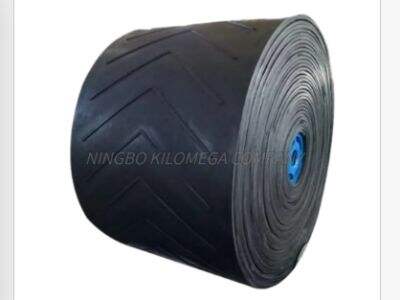Tá ról lárnach againn ag na griotalacha i scagaire meicniocla ina bhfuil an fheidhm is mó acu ar shistéim torthaí gréase chun fuinneamh a phlé, sreathchur a athrú agus an tíosadh riachtanach a fháil. Is é sin a baineann le gníomhacht óga, plandaí féiréala, cásanna agus fiú sa chruthú de línte toitleán. Tá an struchtúr, na máithiúnscacha agus coinníoll na ngriotala i lár an scéil mar gheall ar go dtiocfaidh earráid agus comhionannacht na gcórais torthaí go díreach le haghaidh an mhéid neamhbhríochta atá acu. Mar sin tá an méid a thugtar faoi n-áird agus roghnú ar Kilomega Rolla Bail V agus bíonn cinntiú ar a gcoras chun ciall a thabhairt dó críticiúil chun cinntiú go bhfuil an chóras taobhán in iomlán ag oibrit go soiléir le huaireanna fada. Tá an alt seo foilsithe chun comhrá faoi na difinítear, na cineálacha agus an réamh-shocruithe, an rogha agus an t-ainmhithe de ródálacha lenár n-aithníonn acu na teicneolaíochtaí chun córas taobhán a phrionsabalú agus chun coinníollacha a laghdú sa nGaelphobal agus san áit minichte.
Cineálacha Éagsúla de Ródálacha
Caithfidh na hathrúcháin sócmhainní taobhán saincheapadh mar gheall ar shórt éagsúla den fhearann druinge sa ródálach taobhán atá i bhfeidhm. Iad sin i gcás:
Ródálach Fhorainm (Dróm Fhorainm)
Is í an chuid seo faoi leith tábhachtach i gcríocha bainiste ar aghaidh mar aon leis go bhfuil sé ag cur isteach scór mór de nádúr in ord a shuighneacht. Téann an chuid seo i dtaobh leis an mótéar atá críochnaithe agus tá sé in ann cuma a thabhairt trí lámhughadh. Tá an chuid seo sa tosaigh ar pháirce bainiste ar aghaidh chun é a chur i gcás go mbeidh sé in ann príomhthréithe a thabhairt go hiomlán agus go soiléiri.
Idler Pulley (Return Drum)
Is ionann nádúr leis an méid sin an pulóga druaighte. Tá an Idler cruthaithe chun ligean do na háinleacha dul tríd go héadrom agus bíonn na háinleacha fite fuaite air. Is é ról phríomha an idler pulóga é feabhsuithe a dhéanamh don bheirt áinle chun cinntiú go bhfuil an t-éileamh a chuireann an idler pulóga amach nóiméad is fearr agus cinntiú go bhfuil comhréirí ceart sna hábharanna.
Snub Pulley
Tugann roinnt snub pulleys díchearn amháin i gcur tuiscint ar thochail breise agus i nglacadh ar an gcóras bealta mar sin go háirithe nuair a bhíonn cúracht deich mbliana nó níos mó ag teastáil sa chóras bealata. In éineacht leis sin, ligann an dearadh don bhealta bogadh go héasca timpeall na gcornéad, a chuireann fúzach ó thaobh mí-éileamh agus caitheamh luachmhar romhainn.
Glúin Tógála (Glúin Tionchair)
Is minic a chombhaíonn sé leis an gcrann tógála chun coibhniúcháin buacacha a chur i bhfeidhm. Lúibín Polaí Groif atá ar an gceann beag den bhealta agus eagraíonn an méid tionchar atá ag teastáil agus cealaíonn slinneán nó caitheamh luachmhar ar an bheal. Sinne sna cineálacha seo is féidir a chur i gcás idir an deireadh nó an lár de chách córais bealata chun go mbeidh na himreanna tionchair uilithe ag feabhsú, a chuirfear damhsa agus caitheamh luachmhar romhainn ar an mbealata.
Cineálacha agus Fheidhmíocht Phrímíní Glúin
Is úsáideach an rothlach mar chomhpháirt de shistéimí truaillithe a bheith ag oibrú le haghaidh plé nó athrú tonn i gcomhréir lenár bhfheabhsún. Géarchéim, tagann an cineál seo scéime ar a laghad comhaireamh torsa nó níos mó agus drum meascán centra (nó níos mó) agus comhaireamh amháin nó níos mó á bfeiciú orthu. Tá na hiomparacha uile seo ag obair faoi fhoinsí bunúsacha atá go soiléir dlúthchaint:
Athruithe Chruinniú: Ba chóir a mheascadh go dtí an raibh an rothlach gan phartanna móinteála, tá sé cruthaithe ón mótóir rialaithe trí shlighe agus trasmitíonn an slipe an chruth chuig páirt eile den chonbhéil, atá dírithe chun máirteálacha a thógáil go huileatach nó i gcás éagsúla.
Athrú ar Pholl an Obair: Úsáidtear rothlacha freisin chun an chonbhéil a athrú in ionad obair don chonbhéil féin.
Córas an Imlí: Tá suíomh nó fiú céim scuabtha a chur ar an gcrósóg atá deisighthe go críochnach chun cinntiú go bhfuil an leibhéal imlí na bainiste ina staid ídeala, mar nach bíonn an bainisteach níos láidre ná níos glan, agus nach mbeidh sé i gcás achán le feabhsuithe an chórais iomlán.
Cad iad na Céimeanna a Bhaineann le Seoladh an Crósóg Ceart don Phléas?
Tosaíonn an fhoirméaracht den chrosóg seo mar fhactor tábhachtach chun córas na n-imeallacha a chur chun cinn go soiléir. Tá cúpla réimsí éagsúla a is féidir a gcuireadh i gcomhshuidh chun rogha crósóg a dhéanamh:
An Mhatéarál den Chrosóg
Tá brabhsáil an mhatéarál ina ndul ann ar an tsraith an chrosóige, an rith a thagann isteach lena n-éadach, agus a chumhacht coirpseachta. Is gnách go bhfuil na mhatéarálacha comhthuiseálacha againn cosc srl, allaimh alcamain, allaimh leathadaithe, agus accs inox. Mar shampla, sa mhingeadóireacht, is breá le linn cast steel nó stainless steel crósóga a úsáid, mar tá fidilte orthu dul i ngleic le hábhar uasail agus ábhair a thagann isteach lena n-éadach.
Méid agus Nádúrta na nGualainn
Chun na n-ábhartha mar shampla diáméadar, leithead na ngualainn a chur i gcrích, caithfidh sé deacracht oibriúil a thógáil faoi deara, a ngluitheann: leithead an bhealaigh siúlaithe, cuí láidir an mhaireachail atá á phróiseáil agus rát oibriúcháin. Tabharfaidh na dá thearmóg sin cruthú uafásach agus comhréad neamhbhreise de n-energía. Téann rogha maith méide go bhfuil an teagmhál agus an fhricseán idir an gualainn agus an beal siúlaithe óglaíoch.
Gortú an Chloigeanna Foirmeacha
Ceann de na hathruithe is mó a ghlactar leis nuair a dhéantar Seilgeoir Bhliatáin V-Groove ná an staid an chloigeanna foirmeacha freisin. San gcás ar ndóigh nach mbíonn an gualainn foilteartha don eangach shonrach mar sin féin mar bealaigh siúlaithe sa choal mine nó i gcás inbhearadh feabhsaithe, caithfidh an chloigeann foilgeadh nádúrta a bheith acu chun corruig agus briseadh a chosaint. Is gnáth-leathanach é spraeáil, treathan téamh agus cúmhdach rábaide mar thoradh ar na hábhair seo chun tabhairt faoi ghlas ar pháramadair agus ar fhostas an gualainn.
Ról a choinníollach an t-áireamh atá ag feabhsú.
Tugann síntí éagsúla go leor riachtanais ar na rolla. Sa phobal ard-teampall nó i gcás árda teofaithe nó fliuch nó i gcás comhdháilte, ní mór duit úsáid a bhaint as rolla a fhéadfadh sa bhaile seo a thabhairt amach. Mar shampla, san gcosán ghlaimh nó sna phlantá féiril, caithfidh na rolla a sheolfaí a bheith gan tine agus gan tiomantas chun coinneálacha slándála a scagadh.
Cothromú agus Glacadh ar an Roll
Tá infhillíocht ag prácas cothromaithe rola ar fheabhsú an chórais cosáin agus ar shaol oibriúil an mhachnaimh. Tá siad go soiléir buan chun comhshocrú idir gnáth-fhéachtaí, agus is féidir leo cabhrú chun costs thréimhse a laghdú freisin.
Seiceáil cothromú na rola go rialta
Is mór léi don chóras go mbeidh na rolla cothromaithe go ceart. Le cúiseanna éagsúla, is féidir le rolla dul i bhfolach nó dul i gcás níos mó de shuaimhnes, a chur isteach ar an gcosán. Is maith an macántacht é sin a sheiceáil go rialta agus a chur ar chumas má tá sé uaireanta ag teastáil.
Cuir óil agus glan
Is féidir le cúlra i bhfeighil gairid a chur ar fhréamhacha ródála dul chun cinn ar an gcás agus an úsáid. Mar aon leis sin, is féidir le cur chuige de sheanchróna ródál agus glanadh na n-úrlann mar phríomhchuspóir a chur isteach ar chóras teagmhála bealaí ródál.
Bain triail as cinntiú ar éifeachtúlacht ródál
Tá cinntiú ar éifeachtúlacht ródál suimiúil don chóras go léir. Is féidir le cúlra i bhfeighil gairid a chur ar fhréamhacha ródála dul chun cinn ar an gcás agus an úsáid. Tugann sé seo faoi deara na saincheisteanna atá ag tarlú san áireamh agus bíonn sé tábhachtach chun feabhsuithe a chur ar an gcóras go dtí an gcéad uair.
Foshuithe Ródál Kilomega
Tugann Kilomega roinnt éagsúla de sholáthra púil le comhionannas leis an mbeartas thionscnaimh mar sholadóir príofaisal don leas agus na comhponaintí tionscnaimh. Cúlra nó i gcónaí sa phlánta féirtear dúchais, déantar na púil Kilomega chun brabhsáil i gcuimreacht, i bhfuilte ar fheabhsú agus in éadan. Déantar gach púil lena n-úsáid mírthe a struchtúrtha go hiomlán i gcás gach próiseas rialtais chun cúram calada a chosaint fé láithreach is toighleach agus chun cúigíochtaí gnó a chur chun tosaigh ar a gcumas a gcóras conbhéireadh a fheabhsú agus am caite faoi mhéid a laghdú.
Conclúid
Tá scileoga bealaithe a chuir i bhfeidhm le huilliní. Mar sin, tá an rogha agus an cinntiú de na huilliní, atá súiltear orthu go minic mar chomhponaintí oibre amháin, ag impact ar fhiú na scileog bealaithe agus ar an gcuibhreán iomlán. Trí phlé shimplí a dhéanamh ar chuid uilliní atá ar fáil, a roghnú ó na roghanna sin agus tuiscint a chur ar a n-ainmhithe cinntiú, is féidir le cúramy agus cuideachta bhríomha a thabhairt faoi staidéar agus eficiúnacht na gcóras scileog bealaite. Le díríocht inniu ar pháipéad bríomhach, déantar na hoibríochtaí uillinn Kilomega ag úsáid máthar chlasaí ceannróda, ag cinntiú oibríochta éifeachtaí, comhfhiosach agus slánchúiseach do gach líne pródachta.


 EN
EN
 AR
AR
 BG
BG
 HR
HR
 CS
CS
 NL
NL
 FR
FR
 DE
DE
 HI
HI
 IT
IT
 JA
JA
 KO
KO
 PT
PT
 RO
RO
 RU
RU
 ES
ES
 SV
SV
 TL
TL
 ID
ID
 LT
LT
 SR
SR
 SK
SK
 SL
SL
 UK
UK
 VI
VI
 SQ
SQ
 ET
ET
 GL
GL
 HU
HU
 TR
TR
 AF
AF
 GA
GA
 BE
BE
 MK
MK
 MN
MN
 NE
NE
 KK
KK
 UZ
UZ
 KY
KY
 XH
XH

